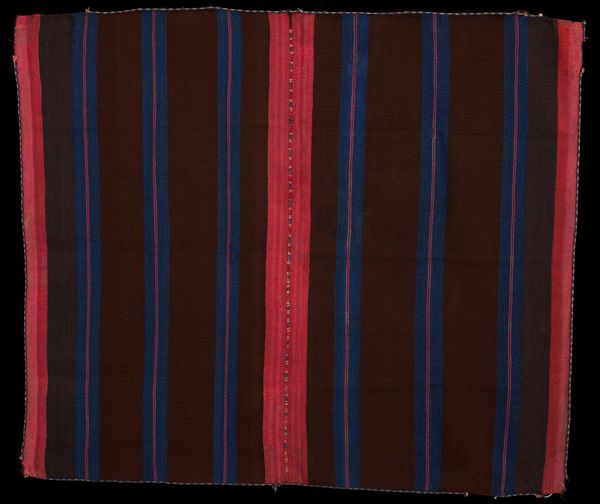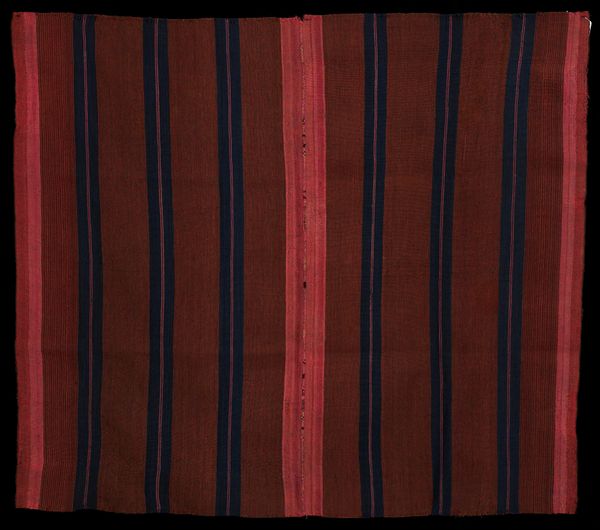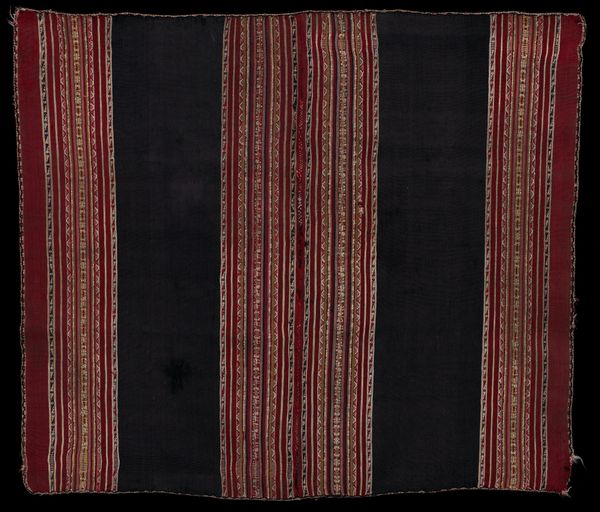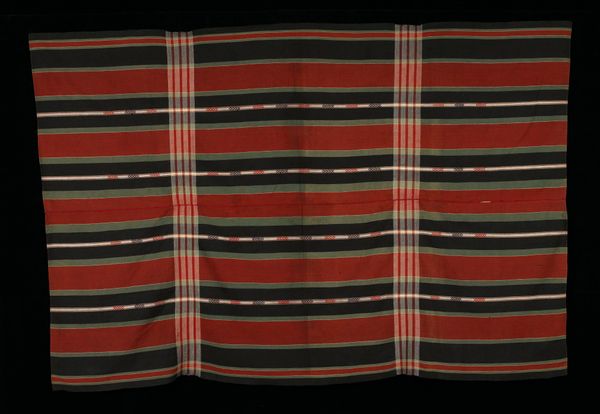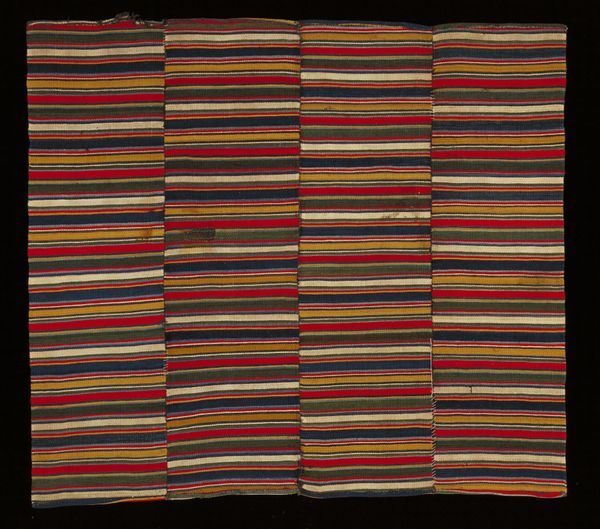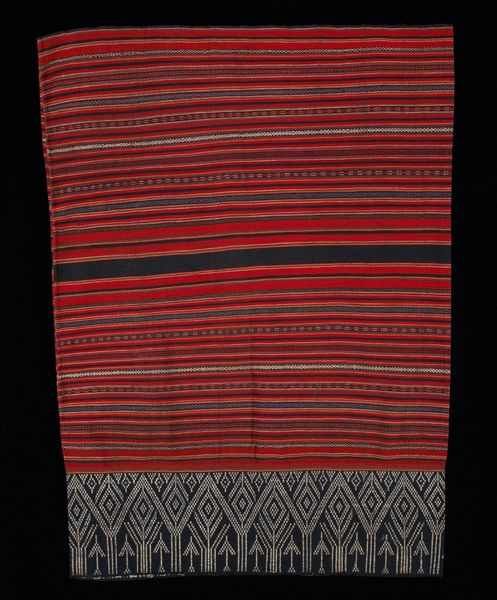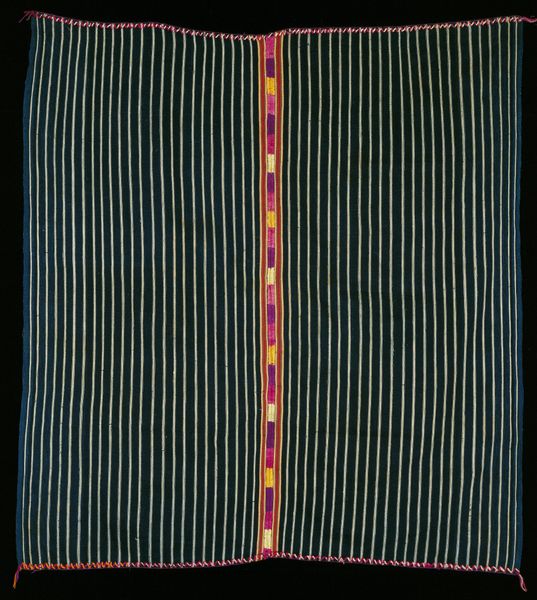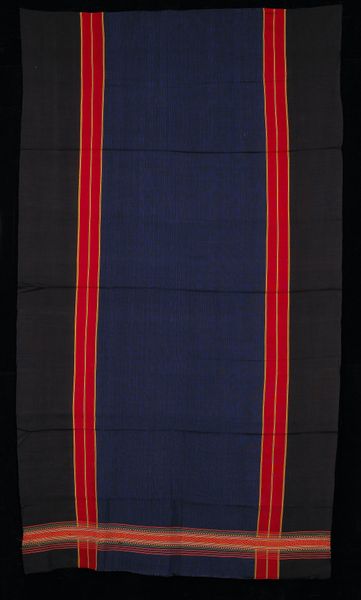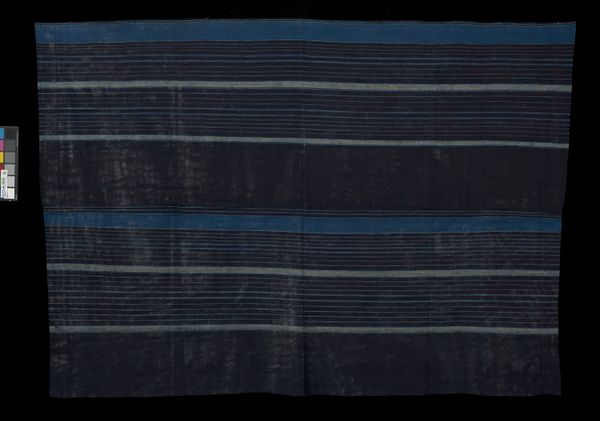
fibre-art, weaving, textile
#
fibre-art
#
weaving
#
textile
#
geometric pattern
#
geometric
#
line
#
indigenous-americas
Dimensions: 50 1/2 x 40 1/16 in. (128.27 x 101.76 cm)
Copyright: Public Domain
Editor: Here we have an Aymara iscayo, or woman's ceremonial mantle, from around the 19th century. It's made of woven fiber and features these strong vertical stripes of red, black, and blue. The colors feel very grounded. How do you interpret this work? Curator: The grounded feeling is no accident. When I see this, I see power interwoven with the very fabric of society. These mantles weren't mere adornments; they were powerful symbols of status and identity within Aymara communities. The act of weaving itself was deeply significant, encoding social and spiritual beliefs. What do you think the choice of colors might symbolize in this context? Editor: Hmm, the dark blues and blacks make me think of night or earth, maybe linked to agricultural cycles? And the reds could signify power or lifeblood? Curator: Exactly! Indigenous textiles of the Americas weren't just visually appealing. These specific color combinations, alongside geometric patterns, encoded cultural knowledge passed down through generations, acting as both practical clothing and a political statement against colonial influence, representing cultural continuity and resistance. The very act of creating this beautiful mantle was an assertion of identity. Do you agree? Editor: That shifts my perspective quite a bit. It's a vibrant claim to cultural resilience, not just a pretty piece of cloth. Thank you. Curator: Indeed, looking at it from this viewpoint allows us to understand the work in ways that can foster important discussion, from colonization, gender identity, and cultural appropriation in contemporary art.
Comments
No comments
Be the first to comment and join the conversation on the ultimate creative platform.
